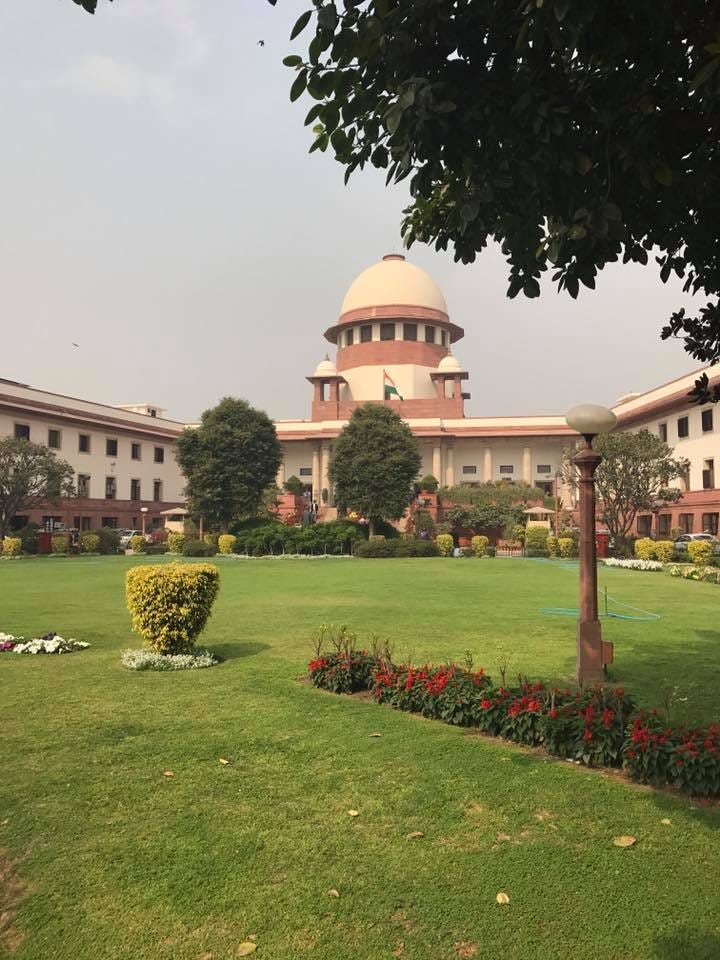Supreme Court Upholds Key Provisions of the Uttar Pradesh Madarsa Act: A New Dimension of Secularism in Education
Dilution of the Basic Structure Doctrine? Revisiting Kesavananda Bharati Case.
Supreme Court Upholds Key Provisions of the Uttar Pradesh Madarsa Act
A three-judge bench of the Supreme Court of India, comprising Chief Justice DY Chandrachud, Justice JB Pardiwala, and Justice Manoj Misra, today (November 5) delivered a landmark verdict on the Uttar Pradesh Board of Madarsa Education Act, 2004. This 70-page judgement, which set aside most parts of a impugned decision by the Allahabad High Court, deepens the interpretation of secularism in India’s constitutional framework and affirms the State's authority in regulating educational standards across institutions, including minority-run Madarsas.
Background and Allahabad High Court Judgement
Earlier this year, the Allahabad High Court had declared the Madarsa Act unconstitutional, holding that it conflicted with the principle of secularism and violated Articles 14 and 21A of the Constitution. The High Court concluded that by placing emphasis on religious instruction, the Act fell outside the secular obligations of the State. Consequently, it invalidated the entire Act, arguing that its provisions were inseparable. In its ruling, the Allahabad High Court also directed the State to accommodate Madarsa students within mainstream educational institutions under the UP Primary Education Board (Supreme Court_Madrassa …).
Supreme Court’s Ruling: Affirming a Balanced Approach
The Supreme Court’s ruling diverged sharply from the Allahabad High Court’s interpretation, maintaining that the Madarsa Act, in large part, aligns with the State’s obligations to ensure the educational advancement of minority communities. In a pivotal portion of its judgement, Chief Justice Chandrachud clarified:
“The Constitutional validity of a statute cannot be challenged for violation of the basic structure of the Constitution. In a challenge to the statute for the violation of the principles of secularism, it must be shown that the statute violates provisions of the Constitution pertaining to secularism” (Supreme Court_Madrassa …).
Dilution of the Basic Structure Doctrine? Revisiting Kesavananda Bharati
The Supreme Court’s interpretation in this judgement may be seen as an indirect dilution of the “basic features” doctrine established in the landmark Kesavananda Bharati case of 1973, delivered by a 13-judge Constitutional Bench. Widely regarded as the Magna Carta of the Indian Constitution, that case held that Parliament, even when exercising its constituent power, could not amend the Constitution in a way that alters its fundamental or basic features—a set of principles the Apex Court, interestingly, did not exhaustively enumerate. The core question this judgement raises is: if Parliament itself cannot amend the Constitution to alter its basic structure, how can a statute that potentially conflicts with these core principles withstand constitutional scrutiny?
This observation, alongside established constitutional provisions and authoritative judicial interpretations, in our opinion, is likely to spark a contentious debate. At stake is the long-held sanctity of the Kesavananda Bharati judgement, which enshrined the basic structure doctrine as an immutable foundation of constitutional law. The current ruling, by emphasising the autonomy of legislation to withstand challenges on grounds other than legislative competence or explicit constitutional violation, may set a new tone for future discourse around the preservation and interpretation of India’s constitutional framework.
In this case, rather than striking down the entire Act, the Supreme Court took a nuanced view, affirming that the Act’s primary purpose—enhancing educational standards in Madarsas—falls within the legislative competence of the State under Entry 25, List III (Concurrent List) of the Constitution. The Apex Court noted that secularism, as a constitutional value, does not preclude minority institutions from providing religious instruction, provided they meet recognised educational standards.
Supreme Court’s Operative Part: Key Findings and Constitutional Grounds
The operative portion of the Supreme Court judgement provides a clear legal rationale for upholding major parts of the Madarsa Act, while selectively invalidating sections that conflicted with national higher education standards. Key points include:
Legislative Competence and Secularism:
The Supreme Court held that the Madarsa Act, by regulating the quality of education in Madarsas, remains within the purview of the State’s legislative competence. It aligns with Article 30 of the Constitution, which protects minority rights to establish and administer educational institutions. The Act’s intention to raise the academic level of students without undermining the religious essence of Madarsas embodies a constructive interpretation of secularism, emphasising inclusivity and positive equality (Supreme Court_Madrassa …).Severability and Higher Education Provisions:
Only the sections of the Act that grant the Board authority over higher education degrees—specifically the Fazil and Kamil degrees—were deemed unconstitutional. These provisions conflict with the University Grants Commission (UGC) Act, enacted under Entry 66, List I, which governs standards in higher education. The Court’s selective approach adhered to the principle of severability, invalidating only these sections while allowing the broader regulatory aspects of the Madarsa Act to remain effective.The Court noted in its ruling:
“Only the provisions which pertain to Fazil and Kamil are unconstitutional, and the Madarsa Act otherwise remains valid”(Supreme Court_Madrassa …).
Right to Education and Minority Rights:
In addressing the compatibility of the Right to Education with minority rights, the Court ruled that Article 21-A (Right to Education) and the Right of Children to Free and Compulsory Education (RTE) Act should be interpreted harmoniously with Article 30. It affirmed that minority institutions are entitled to maintain their religious identity, provided they meet educational standards enabling students to participate fully in society. This interpretation ensures that Madarsas can continue to offer secular education alongside religious teachings without compromising their autonomy (Supreme Court_Madrassa …).Secularism as Inclusivity and Positive Equality:
The Supreme Court emphasised that secularism in the Indian Constitution is not merely the separation of state and religion, but a concept of positive inclusivity. Secularism, in this context, obliges the State to support institutions that serve minority communities, helping to integrate them into the national educational framework. The Madarsa Act, apart from the Fazil and Kamil provisions, was held to contribute positively by elevating educational standards in Madarsas without altering their minority character (Supreme Court_Madrassa …).
In concluding its remarks, the Supreme Court stated:
“The provisions of the Madarsa Act are reasonable as they subserve the object of regulation by improving the academic excellence of students and making them capable of sitting for examinations, while also securing the interests of the minority community in Uttar Pradesh”(Supreme Court_Madrassa …).
A Nuanced Interpretation of Secularism in Education
This Supreme Court judgement reaffirms the State’s dual responsibility to uphold educational standards in minority institutions while respecting their religious character under Article 30. By upholding much of the Madarsa Act, the Court articulates a pragmatic view of secularism, recognising it as a tool to support educational parity without compromising minority rights. The ruling clarifies legislative competence and adds a progressive dimension to secularism within India’s pluralistic framework, affirming that minority institutions can maintain religious instruction alongside a curriculum that meets broader educational goals.
The judgement, however, also raises important constitutional considerations, particularly around the “basic features” doctrine. If secularism is indeed a core tenet of the Constitution, the ruling’s allowance for religiously oriented education alongside secular instruction may be seen as a thoughtful balance rather than a departure from established principles. By ensuring that minority institutions meet common educational standards, the Apex Court upholds the idea that secularism, in the Indian context, is inclusive and integrative, rather than exclusionary.
This approach subtly challenges rigid interpretations of secularism, suggesting that it can encompass a diversity of educational practices as long as they align with national standards. This decision thus provides a valuable precedent for accommodating cultural diversity within the Indian educational system, reinforcing secularism as a foundation for inclusive and balanced educational policies.





